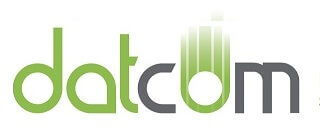After implementing their current infrastructure for almost a decade, the U.S. Department of Education have plans to upgrade, directing their attention toward ensuring that the new initiative keeps mobile capabilities as a high priority.
The current infrastructure, EDUCATE (Education Department Utility for Communications, Applications, and Technology Environment) was the first to move away from an IT environment owned by the government and operated by contractors, to one that’s owned and operated as a service by the contractor–in this case, Perot Systems.
Perot won the contract bid in 2007 for $400 million, and has since provided comprehensive managed service solutions to the Department of Education. Now, however, the Department is ready for a change.
Jason Gray, Chief Information Officer for the Education Department, cited the numerous changes made to IT technologies and capabilities since EDUCATE was implemented in 2007 (when he announced that there was interest for new proposals), as well as changes to goals shared the Department of Education.
The objectives of the new infrastructure, dubbed PIVOT, or the Portfolio of Integrated Value-Oriented Technology, were described in a request for information (RFI) distributed to potential providers. The new infrastructure should, according to the RFI, encourage innovation, optimize the cost to benefit ratio, and show flexibility to make integrating changes in requirements simple. As part of the new initiative, each aspect of the infrastructure (like oversight, hosting data, printing, network services, technical management and integration, and mobile services) will have its own contract written up.
Most of all, however, the Department of Education wants to focus on the mobile capabilities of their solutions. The RFI predicts a shift from a permanently established office space to an increased utilization of teleworking and hoteling (where workers gather temporarily in a shared space) as a result of the National Strategy for Reducing the Federal Government’s Real Estate Footprint. This would cause a shift of over 6,200 users away from an office environment, certainly achieving the objective of the National Strategy.
Migrating technology into a new workspace or implementing mobile and teleworking solutions clearly takes considerable planning, and in such cases, it’s best to consult with an expert in the field. DatCom, LLC has the experience necessary to ensure that your IT initiative goes off without a hitch, and that your solutions are optimized for maximum performance. Give DatCom, LLC a call today to see what we can do for your solutions for a lot less than $400 million.


